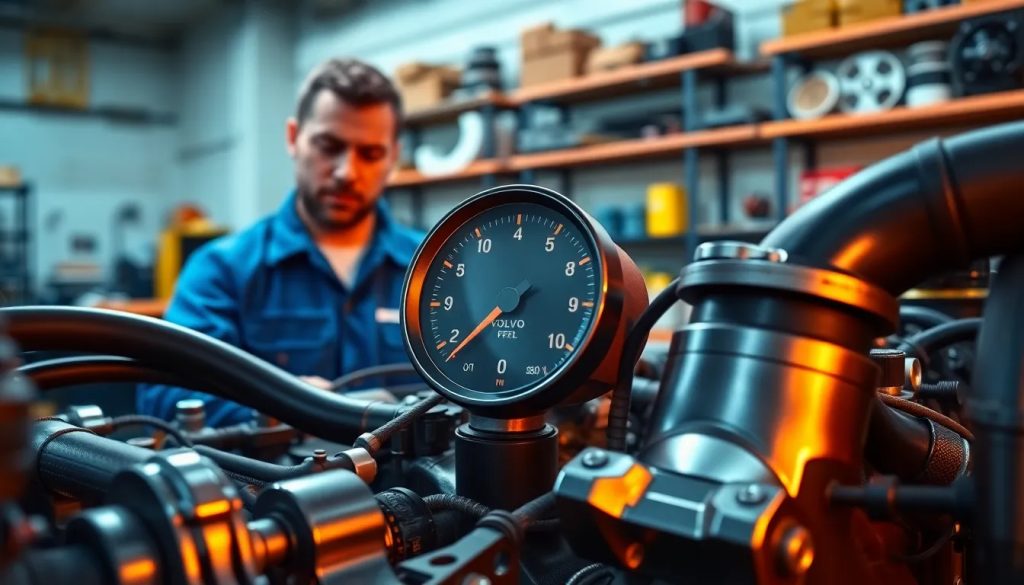Engine fuel delivery pressure Volvo D13 explained

The Volvo D13 engine is renowned for its reliability and performance, but it can experience issues with the engine fuel delivery pressure. Understanding these common problems can help drivers maintain optimal engine performance and avoid unexpected breakdowns. This article will explore various aspects of fuel delivery pressure, including diagnosis, symptoms, and solutions.
- How to fix engine fuel delivery pressure Volvo D13?
- What is the fuel pressure at idle on a Volvo D13?
- How to diagnose low fuel pressure issues on a Volvo D13?
- What are the symptoms of low fuel pressure in a Volvo D13?
- How to reset engine fuel delivery pressure on a Volvo D13?
- What is the role of the fuel pressure sensor in a Volvo D13?
- What can cause power loss at high RPMs in a Volvo D13?
- Questions related to engine fuel delivery pressure Volvo D13
How to fix engine fuel delivery pressure Volvo D13?
Fixing fuel delivery pressure issues in the Volvo D13 requires a systematic approach. First, it’s essential to check the fuel pressure sensor and ensure it is functioning correctly. A faulty sensor can give inaccurate readings, leading to misdiagnosis.
Additionally, inspect the fuel lines for any signs of damage or blockage. Damaged lines can significantly affect fuel delivery, causing low pressure. If the lines are intact, the next step is to examine the injector cups. These components can wear out over time, leading to fuel leaks and pressure drops.
Regular maintenance is key. Keeping the fuel system clean and replacing filters as needed can prevent many issues. It’s also advisable to consult with a professional mechanic who specializes in Volvo engines for a comprehensive diagnostic.
What is the fuel pressure at idle on a Volvo D13?
The fuel pressure at idle on a Volvo D13 typically ranges around 60 psi. This pressure is crucial for ensuring that the engine runs smoothly and efficiently. If the pressure falls below this level, it may indicate a problem within the fuel delivery system.
It's important to note that while the pressure gauge might show adequate readings, other factors could still affect engine performance. For instance, the Engine Control Module (ECM) may restrict fuel flow if it detects anomalies in engine operation.
Maintaining the correct fuel pressure is essential for avoiding problems such as engine stalling or poor acceleration. Regular checks can help ensure that your fuel system is functioning optimally.
How to diagnose low fuel pressure issues on a Volvo D13?
Diagnosing low fuel pressure issues in a Volvo D13 can be a multi-step process. Start by checking the fuel pressure readings with a gauge. If the pressure is below the required levels, it’s time to investigate further.
1. Inspect the fuel filter: A clogged filter can restrict fuel flow.
2. Check for leaks: Look for any signs of fuel leaks in the lines or around the injectors.
3. Examine the fuel pump: The pump may not be delivering sufficient pressure.
4. Test the fuel pressure sensor: Ensure it is providing accurate readings to the ECM.
Another important step is to perform an air test to check for leaks that might affect fuel delivery. This comprehensive approach can help pinpoint the root cause of low fuel pressure issues.
What are the symptoms of low fuel pressure in a Volvo D13?
Recognizing the symptoms of low fuel pressure is vital for maintaining your Volvo D13. Some common symptoms include:
- Engine shaking: This is often caused by inconsistent fuel delivery.
- Power loss: You may experience a noticeable drop in power, especially when climbing hills.
- Stalling: The engine may stall unexpectedly due to insufficient fuel supply.
- Reduced acceleration: Slow acceleration can indicate low fuel pressure.
If you notice any of these symptoms, it’s crucial to address them promptly. Ignoring these signs can lead to more severe engine issues down the line.
How to reset engine fuel delivery pressure on a Volvo D13?
Resetting the engine fuel delivery pressure on a Volvo D13 may be necessary after addressing any underlying issues. The process usually involves:
1. Disconnecting the battery: This helps reset the ECM.
2. Clearing codes: If there are any error codes present, make sure they are cleared.
3. Reconnecting everything: Once you’ve completed the above steps, reconnect the battery and check the fuel pressure readings again.
It’s important to remember that resetting the fuel delivery pressure is not a substitute for repairing the root cause of the problem. Always ensure that any underlying issues are resolved to avoid recurring problems.
What is the role of the fuel pressure sensor in a Volvo D13?
The fuel pressure sensor plays a critical role in the functioning of the Volvo D13 engine. It measures the pressure of the fuel being delivered and sends this information to the ECM. This data is crucial for the ECM to adjust fuel flow and maintain optimal performance.
When the sensor detects a drop in fuel pressure, it triggers the ECM to make necessary adjustments, such as increasing the fuel pump's output. If the sensor malfunctions, it can lead to incorrect readings, causing the engine to perform poorly or even stall.
Regular checks of the fuel pressure sensor can help ensure that it is functioning properly. If issues persist even after replacing the sensor, further investigation into the fuel system may be required.
What can cause power loss at high RPMs in a Volvo D13?
Power loss at high RPMs in a Volvo D13 can be attributed to several factors. One common cause is inadequate fuel delivery. If the engine fuel delivery pressure drops below optimal levels, the engine may struggle to maintain power during acceleration.
Other potential causes include:
- ECM limitations: The ECM may restrict fuel delivery based on other engine parameters.
- Air leaks: Any air leaks in the intake system can affect the air-fuel mixture, leading to power loss.
- Faulty speed sensors: Issues with speed sensors can lead to erratic engine performance.
To troubleshoot this issue effectively, it’s essential to check each of these components systematically. Identifying the underlying cause is key to restoring power and performance.
What is the fuel pressure at idle on a Volvo D13?
As previously mentioned, the fuel pressure at idle on a Volvo D13 is typically around 60 psi. This level is crucial for the engine's smooth operation. If the readings drop significantly, it indicates potential issues within the fuel system that need addressing.
How to fix fuel delivery pressure?
To fix fuel delivery pressure issues, start by checking the fuel pressure sensor, inspecting fuel lines, and ensuring the fuel pump is working correctly. Regular maintenance can help prevent many common problems.
What psi should my fuel pressure be?
The ideal fuel pressure for a Volvo D13 should be approximately 60 psi at idle. If you're experiencing issues, it's essential to monitor the pressure and address any discrepancies.
What should aftertreatment fuel pressure be?
Aftertreatment fuel pressure varies, but it generally should align with the operational parameters of the engine. Maintaining the proper pressure is crucial to ensure the aftertreatment system functions effectively.
With these insights into the engine fuel delivery pressure Volvo D13, you can diagnose and address issues more effectively, ensuring optimal performance and reliability for your engine.
 Volvo D13 engine oil temperature insights
Volvo D13 engine oil temperature insights Volvo D13 engine fault codes explained
Volvo D13 engine fault codes explained Volvo d13 engine bolt torque specs
Volvo d13 engine bolt torque specs Volvo D13 engine oil pressure sensor location
Volvo D13 engine oil pressure sensor locationIf you want to know other articles similar to Engine fuel delivery pressure Volvo D13 explained you can visit the category VOLVO.
Leave a Reply

RELATED POSTS